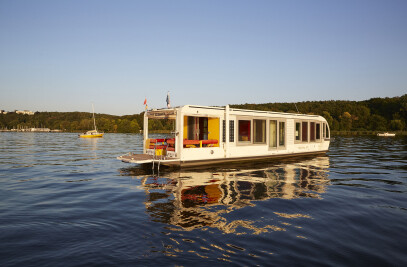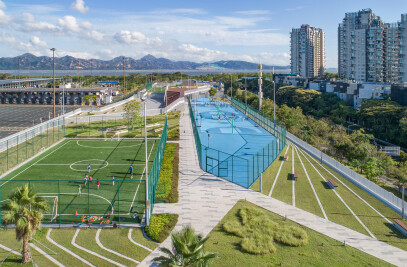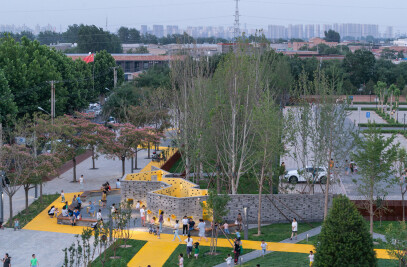A massive, larger than life ribbon takes children and adults alike on a fun and adventurous journey at this year’s Kids Design Week Beijing. Co-organized and curated by Crossboundaries, the event is open to the public from Sept 29th to Oct 6th.
The exhibition theme “Grow Down, Shrink Up” invites children and grown-ups to swap roles, exchange perspectives and change their conventional ways of thinking, in an effort meant to strengthen mutual understanding, enhance communication and make innovation happen.
Following a considerably long period of economic growth and the changing of the one-child-policy with its soon to be seen consequences, the focus of the nowadays public debate in Chinese society is education, to the extent that the whole system is being reconsidered for a boost in critical thinking, creativity and adaptability.

In this context, Kids Design Week is an interdisciplinary communication platform, which brings together parents, educators and psychologists, as well as designers and child industry professionals in an interactive dialogue for kids and with kids.
The format, split into workshops & activities, salons, exhibitions & art installations, covers a variety of topics: science and technology, arts and design, exploration and discovery, food and well-being.
The event is taking place in 751, one of Beijing’s former industrial parks that has been revitalized in recent years as buzzing cultural hubs, melting pots for the artistic community, creatives and young entrepreneurs.

As co-organizer and curator, it was Crossboundaries’task to develop a framework that would link space and program in a consistent and comprehensive way. Roughly 1000sqm of open space, rigidly ordered by a grid of concrete columns, has been reimagined as a fantastical play-scape, where kids and adults explore and play together, share opinions and learn new ideas.
By introducing a single, fluid gesture, the space is reinvented. A pure white ribbon draws visitors in with a spiral-like movement, only to then change dimension and turn into a path - a succession of activities, games and discoveries at each step. Winding through and around the various art installations, the designed journey unfolds its stories and acts as a complementing feature for each of the participants, enhancing the way they’re perceived, whilst simultaneously solving their various spatial and technical requirements.

Out of the path, the ribbon re-emerges in key moments, sometimes becoming backdrop for art exhibition, other times defining partitions for functional areas. Its circular movements guide and control visibility and access for either children or adults, forcing them to swap roles and take lead in turns.
By differentiating materials inside-outside, spaces gain new qualities: interiors warp onto themselves in distorted reflections while white exteriors create further abstraction and pureness to the overall space.
This is a place where the world is turned upside down, senses are altered, and rules are no longer the same. The interaction between children and parents is more than quality time spent together, but a shared experience where they stimulate and inspire each other to break conventions together. Because when there is collision of ideas and perspectives, innovation happens.





































